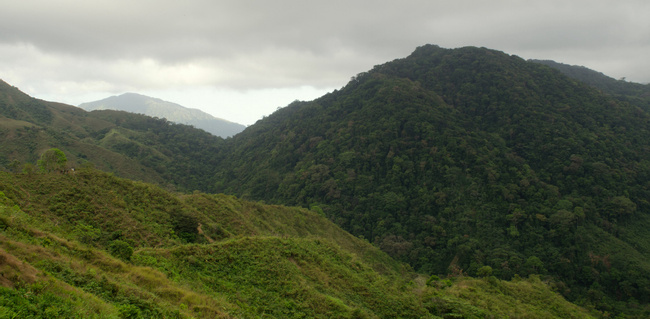
Cerro Hoya National Park
Created in 1984, this 32,557-hectare (80,450-acre) national park contains some of the last remaining primary forest on the Azuero Peninsula. Until recently, the park was extremely difficult to reach and only explored by intrepid travelers. However, new improvements to the road system along the eastern coast of the Azuero have made this fantastic park much more accessible.
More about Cerro Hoya National Park
The park is named after the peninsula’s tallest mountain, Cerro Hoya, which measures some 1,559 meters (5,115 ft.). There are two other peaks in the park as well – Cerro Moya, which tops out at 1,534 meters (5,033 ft.), and Cerro Soya, which reaches 1,478 meters (4,849 ft.). Together, these mountains make up the Tres Cerros (Three Hills). The mountains have volcanic origins and harbor some of Panama’s oldest rocks. The park protects a wide range of plants and animals. Low montane rainforests are found on the highest peaks, while humid tropical forests dominate the low coastal zones. Several rivers – including the Tonosí, Portobelo, and Pavo – run through the park and form spectacular waterfalls and pools. More than 95 species of birds have been identified in the park, including the endangered scarlet macaw and the great green macaw. Another notable bird is the Azuero parakeet, a subspecies of the painted parakeet that is indigenous to the area. There are only around 2,000 of these birds thought to exist; serious birders will be excited at the possibility of spotting them. The parakeets tend to hang around the lowlands from April–July and feed on fruits like figs and nances. Other avian species that reside within the park include king vultures, ospreys, trogons, toucans, and mangrove black hawks. Mammal species include jaguars, white-tailed deer, ocelots, pacas, and five species of monkeys. There are a variety of insects, reptiles and amphibians too. Arriving early in the morning will give visitors a better chance of spotting wildlife. The park’s facilities are extremely basic. There is no ranger station and the trails are rugged. Getting to the park is also difficult, as the roads can be rough and lack signs. For this reason, it’s only recommended to visit the Cerro Hoya National Park with a guide.
We believe travel is more than ticking destinations off a list – it’s about discovering new places deeply, feeling connected wherever you go, and knowing you have a trusted team behind you every step of the way.



